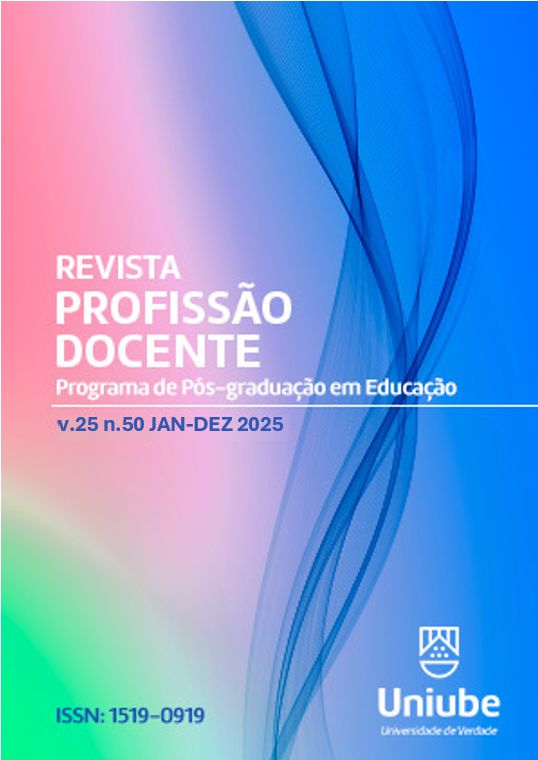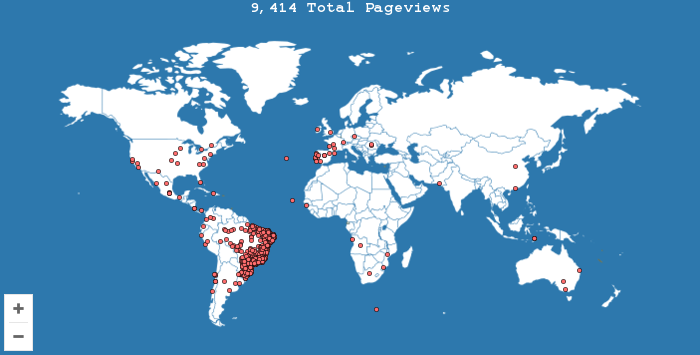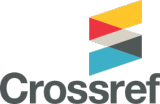Cobwebs and Mathematical Modelling: Model Building as a Possibility for Teaching Mathematics
DOI:
https://doi.org/10.31496/rpd.v25i50.1673Keywords:
models, mathematical modelling, GeoGebra, cobwebsAbstract
This research aimed to build a model of spider webs, through Mathematical Modelling (MM) procedures, verifying the possibilities of use in teaching and learning Mathematics in Basic Education. The conception of MM as a research method applied to Education was used as a theoretical basis. This is qualitative research, particularly a documentary study, in which a model was constructed using the GeoGebra software. Data analysis was carried out based on a priori categories, derived from theory, which made its analysis possible. Thus, after analysis and discussion of the data, from the triangular web connections can be established between nature and academic mathematical knowledge, and pedagogical proposals may emerge that seek to bring students closer to their reality, making them more active subjects. and reflective in classes and in society, enhancing the teaching and learning of Mathematics.
Downloads
References
BASSANEZI, R. C. Ensino-aprendizagem com modelagem matemática. 2. ed. São Paulo: Editora Contexto, 2010.
BIEMBENGUT, M. S. Concepções e tendências da modelagem matemática na educação brasileira. Tópicos Educacionais, Recife, v. 18, n. 1-2, p. 118-138, 2012.
BIEMBENGUT, M. S. Modelagem matemática no Ensino Fundamental. 1. ed. São Paulo: EDIFURB, 2014.
BIEMBENGUT, M. S. Modelagem na Educação Matemática e na ciência. São Paulo: Editora Livraria da Física, 2016.
BOGDAN, R.; BIKLEN, S. Investigação qualitativa em educação. Porto, Portugal: Editora Porto, 2010.
BRASIL. Ministério da Educação. Base Nacional Comum Curricular. Ensino Fundamental, MEC. Brasília. 2018.
BRASIL. Secretaria de Educação Fundamental. Parâmetros Curriculares Nacionais. Matemática: primeiro e segundo ciclos do ensino fundamental. Secretaria de Educação Fundamental do Ministério da Educação e do Desporto. MEC-SEF. Brasília. 1997.
COSTA, R. L. Geometria de teias. Orientadora: Maria Aparecida Soares Ruas. 2009. 78 f. Dissertação (Mestrado em Ciências Matemáticas) – Instituto de Ciências Matemáticas e de Computação, Universidade de São Paulo, São Carlos, 2009. Disponível em: https://teses.usp.br/teses/disponiveis/55/55135/tde-01092009-090119/pt-br.php. Acesso em: 01 nov. 2022.
MADRUGA, Z. E. F. Processos criativos e valorização da cultura: possibilidades de aprender com modelagem. Tese (Doutorado em Educação) – Pontifícia Universidade Católica do Rio Grande do Sul, Porto Alegre, RS, 2016.
MONTENEGRO, R. V. D. A teia de aranha. 6. ed. E.U.A. Geoscience Research Institute (Instituto de Pesquisas em Geociências), 2003.
OLIVEIRA, I. L. L. de; GUIMARÃES, S. U.; ANDRADE, J. A. A. As potencialidades do GeoGebra em processos de investigação matemática: uma análise do desenvolvimento de objetos de aprendizagem da EaD no ensino presencial. Revista do Instituto GeoGebra Internacional de São Paulo, [S. l.], v. 1, n. 1, p. CCLXV - CCLXXIX, 2012. Disponível em: https://revistas.pucsp.br/index.php/IGISP/. Acesso em: 20 out. 2023.
RIBEIRO, D; NEVES, F; MOREIRA, C. S. In: Dicionário Online de Português. Porto: 7Graus, 2009. Disponível em: https://www.dicio.com.br. Acesso em: 28 nov. 2022.
SOARES, L. H. Tecnologia computacional no ensino de matemática: o uso do GeoGebra no estudo de funções. Revista do Instituto GeoGebra Internacional de São Paulo, 1(1), LXVI - LXXX. Disponível em: https://revistas.pucsp.br/index.php/IGISP/article/view/8923. Acesso em: 20 out. 2023.
Downloads
Published
How to Cite
Issue
Section
License
Submitted texts approved by the Editorial Board of Revista Profissão Docente will be published, and their authors may use them for future publications, provided that the original edition is properly cited (title, Revista Profissão Docente, volume, issue, year of publication, and page numbers of the referenced text). All articles published in this journal are the sole responsibility of their authors. Revista Profissão Docente and Universidade de Uberaba assume no legal responsibility for their content.















